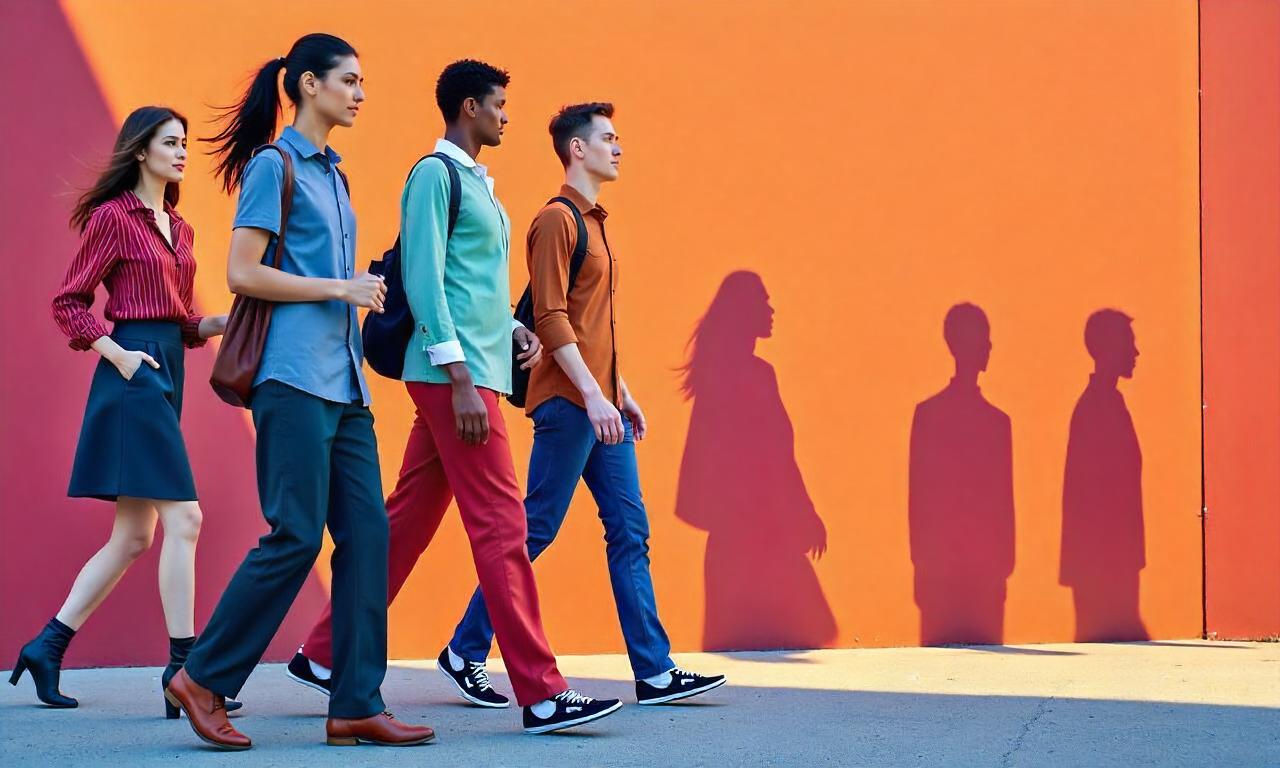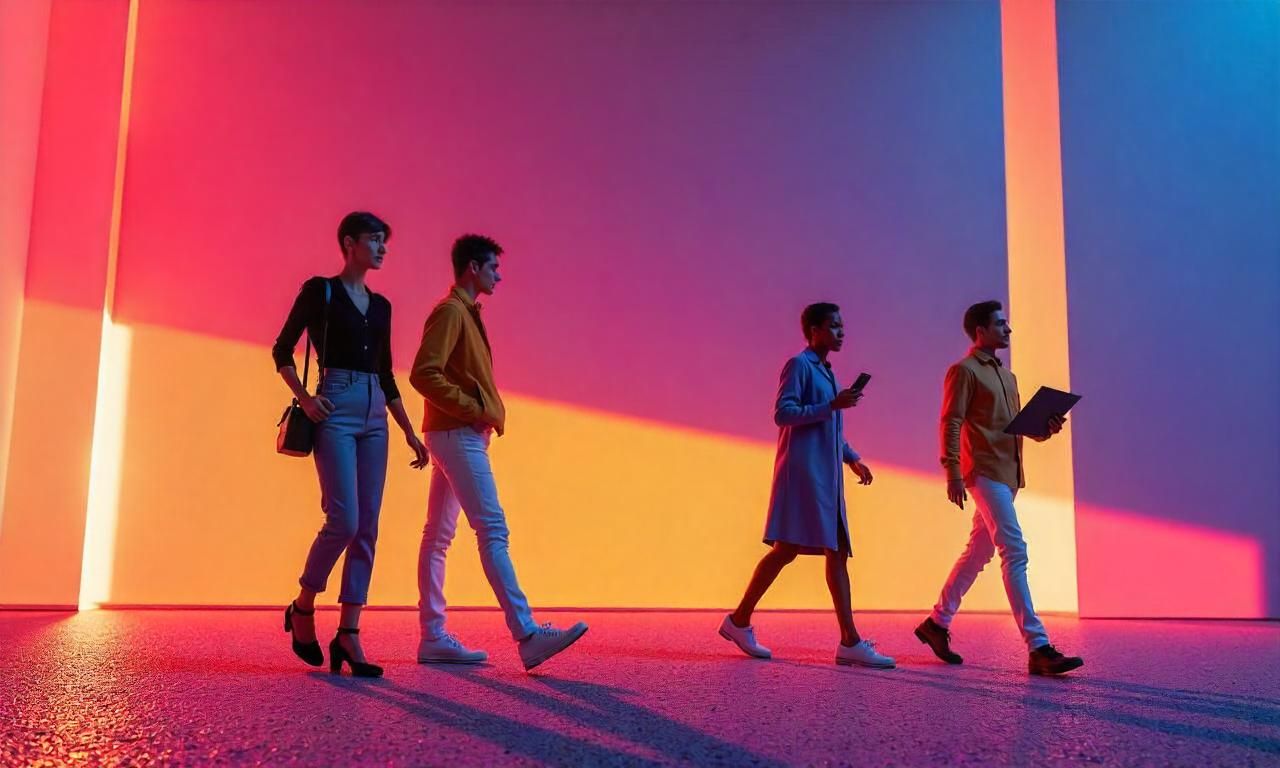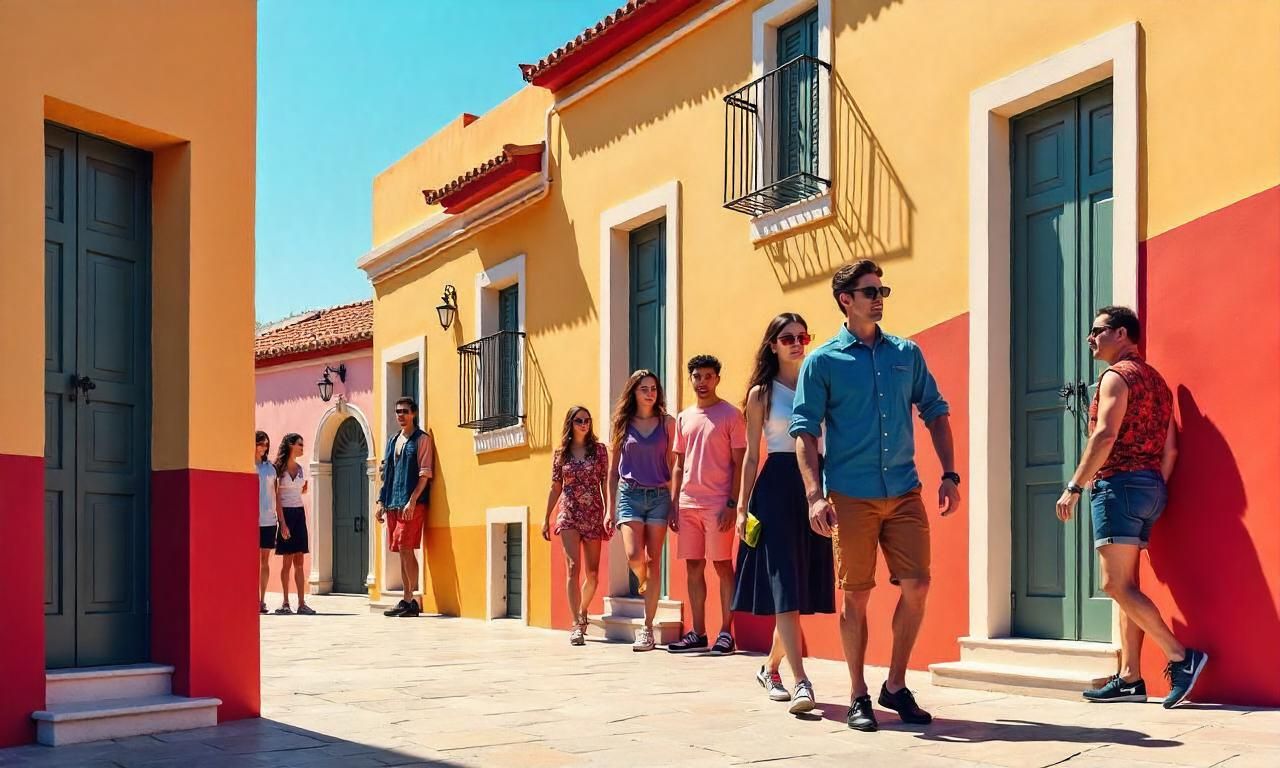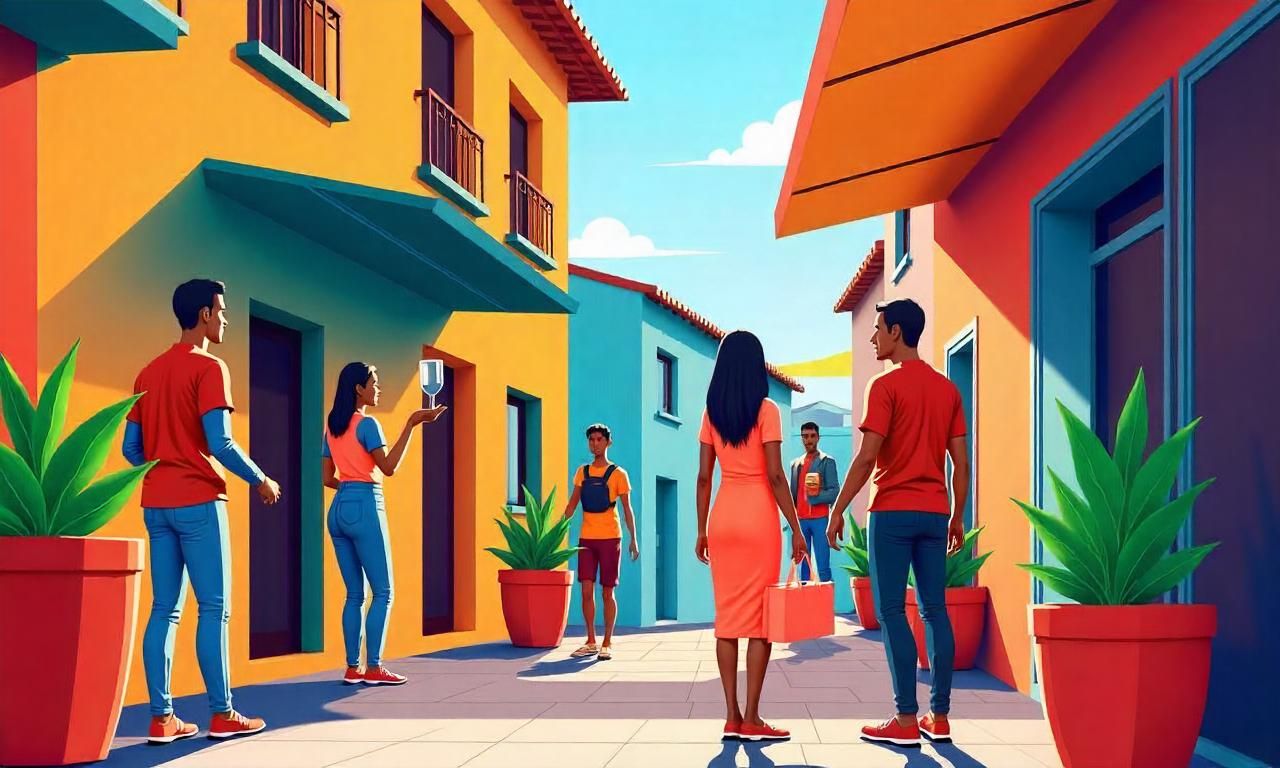In today’s fast-paced and interconnected world, cultural influences on fashion trends are more pronounced than ever. Fashion is no longer just about aesthetics or individual expression—it is a reflection of societal values, historical narratives, and the ever-evolving identity of communities. From the traditional garments of indigenous cultures to the artistic movements that redefine style, culture acts as a foundational force in the creation and dissemination of global fashion. This article explores how cultural influences on fashion trends manifest across different dimensions, including historical heritage, artistic expression, social movements, and globalization. By understanding these elements, we can appreciate the deep connection between cultural influences on fashion trends and the way fashion continuously mirrors and shapes human experiences.
Table of Contents
ToggleThe Historical Roots of Cultural Fashion
Fashion trends are often built on the cultural influences on fashion trends that originate from centuries-old traditions. Historical heritage plays a crucial role in inspiring contemporary designers, as they draw from the rich cultural tapestry of their ancestors to create modern interpretations.
Traditional Garments as a Source of Inspiration
Traditional garments are a bold testament to the cultural influences on fashion trends that have persisted for generations. For example, the Japanese kimonos, which have been worn for over a thousand years, have inspired countless modern designs, from minimalist yukata-inspired summer wear to high-fashion collections by designers like Yohji Yamamoto and Rei Kawakubo. Similarly, the saree, a staple in Indian culture, has evolved into a versatile fashion trend that transcends borders, with designers reimagining its flow and fabric to suit global tastes. These garments are not just clothing; they are cultural symbols that carry stories, identities, and the values of the communities they represent. The reuse of traditional elements in modern fashion often sparks conversations about cultural preservation and innovation, highlighting how the past continues to influence the present.
Cultural Symbols and Their Modern Interpretations
Cultural symbols, such as emblems, colors, or patterns, are frequently repurposed in fashion to reflect contemporary ideals. The Mexican huipil—a traditional embroidered blouse—has found new life in the global fashion scene, with designers incorporating its vibrant colors and intricate designs into modern collections. This transformation not only honors the cultural influences on fashion trends but also introduces them to a broader audience, allowing for cross-cultural appreciation. In many cases, these reinterpretations serve as a bridge between the old and the new, proving that cultural influences on fashion trends are not static but dynamic.
The Power of Regional Styles
Regional styles are another aspect of cultural influences on fashion trends, as they are deeply tied to geography, climate, and local customs. For instance, the Arabian djellaba, a long cloak worn in North Africa, has inspired contemporary streetwear and sustainable fashion due to its practical design and symbolic significance. Similarly, the Maasai shuka in Kenya has become a popular choice for fashion enthusiasts worldwide, showcasing how cultural influences on fashion trends can transcend borders and become global phenomena. These examples illustrate that fashion is a living archive of cultural evolution, where regional identities shape modern trends in unique and meaningful ways.
The Influence of Art and Design on Fashion Trends
Art and design have always been intertwined with fashion, acting as a cultural influence on fashion trends that redefines style through creativity and innovation. Designers often draw from artistic movements, cultural iconography, and visual storytelling to create collections that resonate with audiences on a deeper level.
Cultural Art Movements and Their Fashion Legacy
The cultural influences on fashion trends can be traced back to artistic movements that have historically shaped visual culture. For example, the Art Deco era of the 1920s and 1930s, with its emphasis on geometric shapes and luxury, influenced the modernist fashion of the time, leading to the rise of streamlined silhouettes and bold accessories. Similarly, Cubism—a movement that fragmented objects into geometric components—has inspired asymmetrical designs and avant-garde fashion in recent years. These examples demonstrate how artistic innovation continues to inform fashion trends, creating a dynamic relationship between cultural influences on fashion trends and artistic expression.
Collaborations Between Artists and Fashion Designers
Collaborations between artists and fashion designers have become a key driver of cultural influences on fashion trends. By merging artistic vision with fashion creativity, these partnerships produce collections that challenge conventional aesthetics. For instance, the collaboration between artists like Banksy and fashion brands has introduced street art elements into mainstream fashion, blending cultural influences on fashion trends with urban culture. This cross-pollination of ideas not only enriches the fashion landscape but also brings cultural influences on fashion trends to the forefront of global conversations.
The Role of Cultural Iconography in Branding
Cultural iconography, such as national symbols or religious motifs, is often used in branding to create a strong cultural connection with consumers. The French flag and slogan have become synonymous with elegance and sophistication, while African patterns like kente cloth have been adopted by brands to symbolize diversity and heritage. These cultural elements not only add visual interest to fashion but also serve as a bridge between tradition and modernity, reinforcing the idea that cultural influences on fashion trends are as much about identity as they are about style.
Social Movements and the Evolution of Fashion Trends

Social movements have played a significant role in shaping cultural influences on fashion trends, as they often drive changes in societal norms and individual expression. From civil rights to environmental activism, these movements have left an indelible mark on the fashion industry, influencing both design philosophy and consumer behavior.
Cultural Shifts Driving Fashion Innovation
Cultural influences on fashion trends are frequently driven by social movements that challenge the status quo. The feminist movement, for instance, has led to the rise of androgynous styles and gender-neutral fashion, reflecting a shift in cultural values around identity and freedom. Similarly, the Black Lives Matter movement has inspired black-centric fashion and the use of cultural influences on fashion trends to celebrate African heritage and resistance. These changes demonstrate how fashion trends are not just about what is worn but also about what is symbolized and communicated through clothing.
Fashion as a Tool for Social Change
Fashion has long been used as a tool for social change, with designers leveraging cultural influences on fashion trends to address global issues. For example, eco-friendly materials and sustainable practices have become fashion trends driven by environmental activism, as brands like Stella McCartney and Patagonia prioritize cultural influences on fashion trends that align with sustainability goals. Likewise, cultural influences on fashion trends have been used to promote body positivity, inclusivity, and cultural pride, with modern fashion embracing diverse body types and ethnic motifs to reflect cultural diversity. The intersection of <strong>cultural influences on fashion trends</strong> and <strong>social movements</strong> highlights how fashion can serve as both a <strong>mirror and a catalyst</strong> for change, making it an essential component of <strong>cultural expression</strong>.
The Rise of Inclusive and Diverse Trends
The rise of inclusive and diverse trends is a direct result of cultural influences on fashion trends that celebrate individuality and multiculturalism. Designers are increasingly incorporating cultural influences on fashion trends from underrepresented communities, such as Indigenous fashion, LGBTQ+ aesthetics, and ethnic diasporas. This shift not only broadens the fashion landscape but also ensures that cultural influences on fashion trends are inclusive and representative of the global population. By embracing these cultural influences on fashion trends, the fashion industry is evolving to better reflect the values and identities of its consumers.
Globalization and Cross-Cultural Fashion Trends
In the era of globalization, cultural influences on fashion trends have become more interconnected and widespread. As people from different cultures interact more frequently, fashion trends are no longer confined to specific regions but are shaped by a blend of global and local cultures.
The Role of Technology in Cultural Exchange
Technology has revolutionized how cultural influences on fashion trends are shared and adapted. With the rise of social media, designers and consumers can now access and incorporate cultural influences on fashion trends from around the world in real time. For example, Instagram and TikTok have become platforms for cultural exchange, where users from diverse backgrounds share their traditional attire and local fashion with a global audience. This digital accessibility has accelerated the spread of cultural influences on fashion trends, making them more mainstream and accessible than ever before.
Fast Fashion and the Appropriation of Cultural Elements
While globalization has expanded the reach of cultural influences on fashion trends, it has also raised questions about cultural appropriation. Fast fashion brands often reproduce traditional elements from various cultures at a massive scale, sometimes without proper acknowledgment or respect for their origins. This practice can lead to the commercialization of cultural influences on fashion trends, as global brands adapt local designs into international fashion. However, cultural influences on fashion trends can also foster appreciation and awareness, as consumers become more informed about the origins and significance of the clothing they wear.
The Influence of Global Markets on Local Cultures
Global markets have transformed local cultures into global fashion trends, creating a two-way exchange of cultural influences on fashion trends. For instance, Western fashion has influenced traditional attire in Asian and African cultures, while local styles have also gained international recognition. This cultural exchange has led to the emergence of hybrid styles, where elements from different traditions are combined to create something new. Cultural influences on fashion trends in this context are not just about borrowing but also about blending and evolving, ensuring that fashion remains a living reflection of culture.
The Future of Cultural Fashion in a Globalized World
As the global fashion industry continues to expand and diversify, cultural influences on fashion trends are expected to play an even greater role in shaping the future of style. Designers and brands are increasingly prioritizing cultural authenticity, collaborating with artisans, and incorporating traditional techniques into modern collections. This cultural fusion not only preserves heritage but also drives innovation, proving that cultural influences on fashion trends are as relevant as ever in an ever-evolving world.
Conclusion
The role of culture in shaping modern fashion trends is undeniable, as it provides the foundation for creativity, identity, and innovation. From historical heritage to artistic expression, social movements, and globalization, cultural influences on fashion trends continue to evolve and adapt to new contexts. As we move forward, it is essential to recognize and respect these cultural influences on fashion trends, ensuring that fashion remains a true reflection of the diverse world we live in. By embracing cultural influences on fashion trends, the fashion industry can celebrate tradition while pushing boundaries, creating a dynamic and inclusive cultural narrative that resonates with global audiences.















